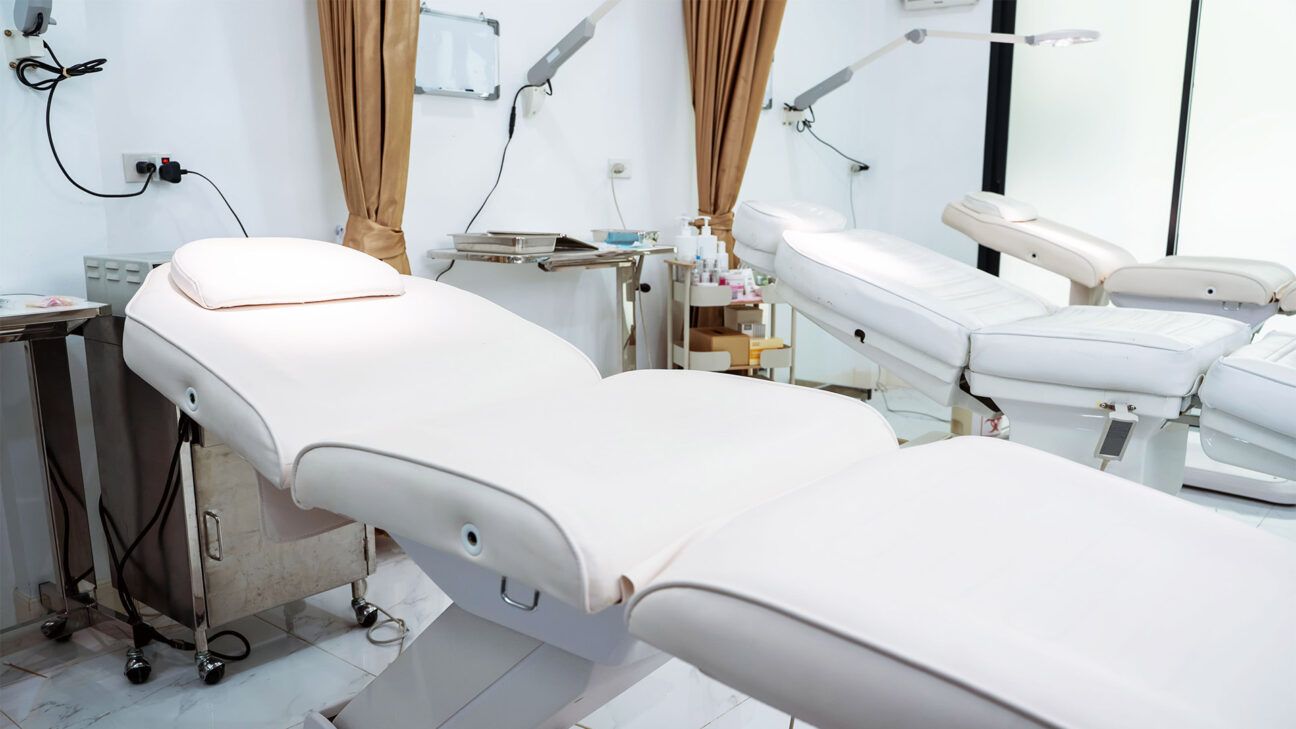
- An investigation led by the CDC highlights the potential risks of HIV transmission through injectable cosmetic procedures like “vampire facials.”
- The report links three HIV diagnoses to women who received vampire facials at an unlicensed medical spa in New Mexico.
- Cosmetic procedures, even those using micro-needling techniques, are generally considered safe in licensed facilities with appropriate infection control practices.
A new investigation led by the Centers for Disease Control and Prevention (CDC) warns of potential HIV transmission through cosmetic services using needles.
The April 25 report links three HIV cases in women who received so-called “vampire facials” at an unlicensed medical spa in New Mexico. The procedure involves drawing blood from a client and injecting the separated platelet-rich plasma into the face.
The transmission of HIV at “spa A” in New Mexico occurred via contaminated blood from an undetermined source, the report found. The cluster of HIV infections occurred in people with no known HIV risk factors.
“Although transmission of HIV via unsterile injection practices is a known risk, determining novel routes of HIV transmission among persons with no known HIV risk factors is important,” the report stated.
The investigation tracked current and former spa A clients who received new HIV diagnoses from 2018–2023. The report identified 59 clients considered at risk for HIV exposure (20 received vampire facials, and 39 received other injection services, such as Botox). The three HIV diagnoses were reported to the New Mexico Department of Health by clinicians.
The CDC report marks the first documented cases of HIV transmission through nonsterile cosmetic injection procedures.
The authors of the report say clinicians ought to consider cosmetic injection procedures like vampire facials as a possible risk factor for HIV transmission. Spa facilities offering these procedures can prevent HIV transmission through adequate infection control practices, the report authors said.
“Requiring adequate infection control practices and maintenance of client records at spa facilities offering cosmetic injection services can help prevent the transmission of HIV and other bloodborne pathogens and ensure adequate traceback and notification in the event of adverse clinical outcomes, respectively,” the authors wrote.
What is a vampire facial?
Vampire facials, or platelet-rich plasma (PRP) with micro-needling, is a simple, minimally invasive nonsurgical cosmetic procedure performed by dermatologists and cosmetic surgeons at licensed facilities and medical spas.
In many cases, vampire facials performed at medical spas may be more cost-effective than those performed at a cosmetic surgeon’s office.
A vampire facial involves drawing blood from the client and separating the platelet-rich plasma with a centrifuge before injecting the plasma back into the face with tiny needles. The plasma is accompanied by a hyaluronic acid filler, which may result in plumper skin with a more youthful appearance.
In most cases, vampire facials and other skin care treatments are short outpatient procedures that require little recovery time. These services are often touted as “anti-aging” for the face and body.
Proponents of the treatment have said the procedure reduces wrinkles and other signs of aging, as well as the appearance of acne scars.
But vampire facials are not for the faint of heart. For instance, Kim Kardashian, who helped popularize the procedure more than 10 years ago, said she regretted having had one.
Are vampire facials safe?
In licensed facilities with adequate infection control practices, vampire facials and other skin care treatments using needles are generally considered safe. The American Board of Cosmetic Surgery offers guidance for finding a licensed cosmetic surgeon to best suit your needs.
Though the procedure may be unpleasant and even painful to some, the side effects of vampire facials are generally minimal. These may include:
- bleeding
- swelling
- bruising
- redness
- tenderness
However, less is known about the side effects of vampire facials performed at unlicensed medical spas, such as spa A in New Mexico.
The CDC’s investigation notes the New Mexico spa did not follow recommended infection control practices, thus contributing to the transmission of HIV in a handful of clients.
William Schaffner, MD, professor of infectious diseases at Vanderbilt University Medical Center in Nashville, said HIV transmission in healthcare settings may occur when there are “flagrant deviations from standard infection control practices.”
Such deviations may include reusing scalpels or needles intended for single use.
Another scenario could involve inserting a needle that was used for one person into a vial of medication that’s intended for someone else, thereby contaminating the vial.
“And then another needle, even though it’s sterile, goes into that vial, but it brings up the contaminated material and then inoculated into another patient,” Schaffner explained.
Schaffner told Healthline the source of HIV transmission originates from a person with untreated HIV.
“It’s usually not the caregiver; it’s not the medical professional, licensed or unlicensed. It’s almost always another patient,” he explained.
Should people with HIV avoid vampire facials?
When performed appropriately in sterile settings at licensed facilities, vampire facials should be safe for anyone — even those being treated for HIV, Schaffner said.
“If appropriately treated, the [HIV] viral load should be very low or undetectable,” he explained.
“Appropriate infection control procedures would prevent transmission to other patients regardless of the initial patient’s status. Thus, there is no need to bar any such patient from these medical procedures as long as they are provided in a licensed healthcare facility that adheres to rigorous standard infection control practices,” Schaffner said.
Takeaway
A recent CDC investigation linked three HIV cases in women to vampire facials performed at an unlicensed med spa in New Mexico. The procedure, known as platelet-rich plasma with micro-needling, involves drawing blood from a patient and then injecting the plasma back into their face. Under sanitary conditions in licensed facilities with rigorous infection control practices, vampire facials are generally considered safe, even for those with HIV.
'Vampire Facials' Linked to 3 HIV Cases, CDC Says: What to Know
Source: Pinoy Lang Sakalam



0 (mga) komento:
Mag-post ng isang Komento